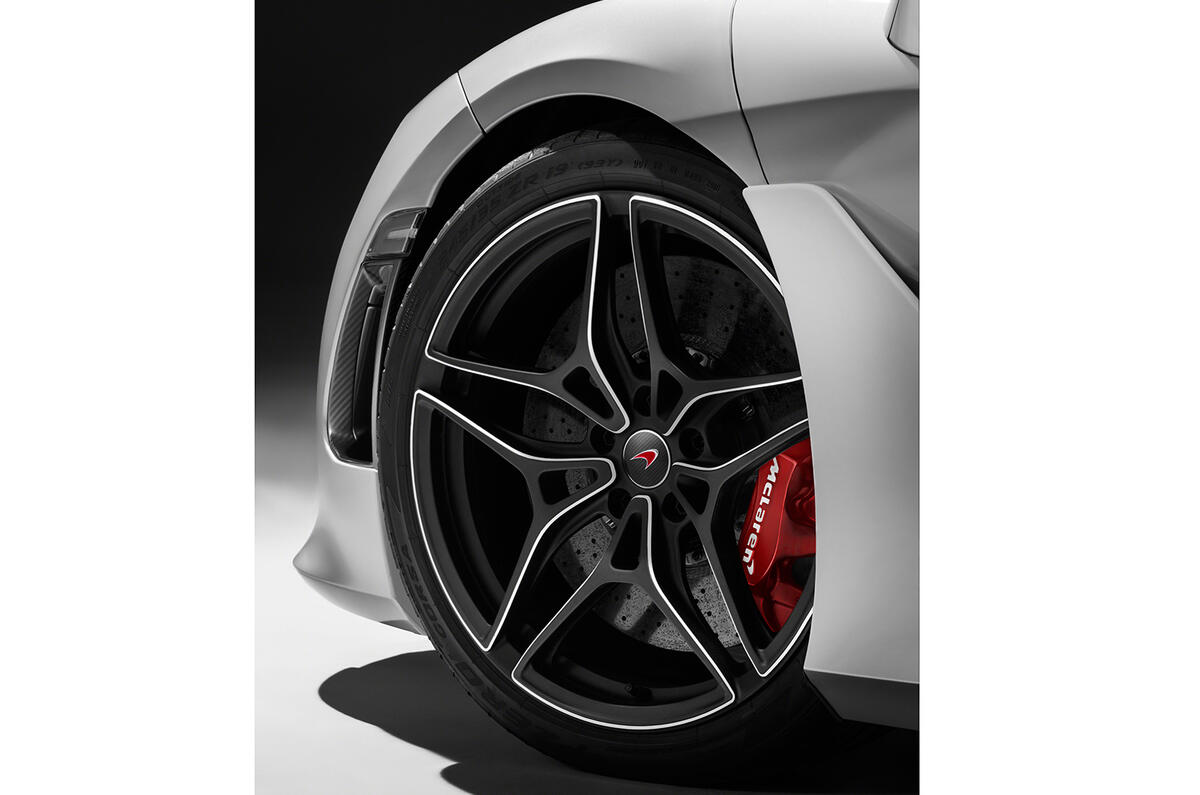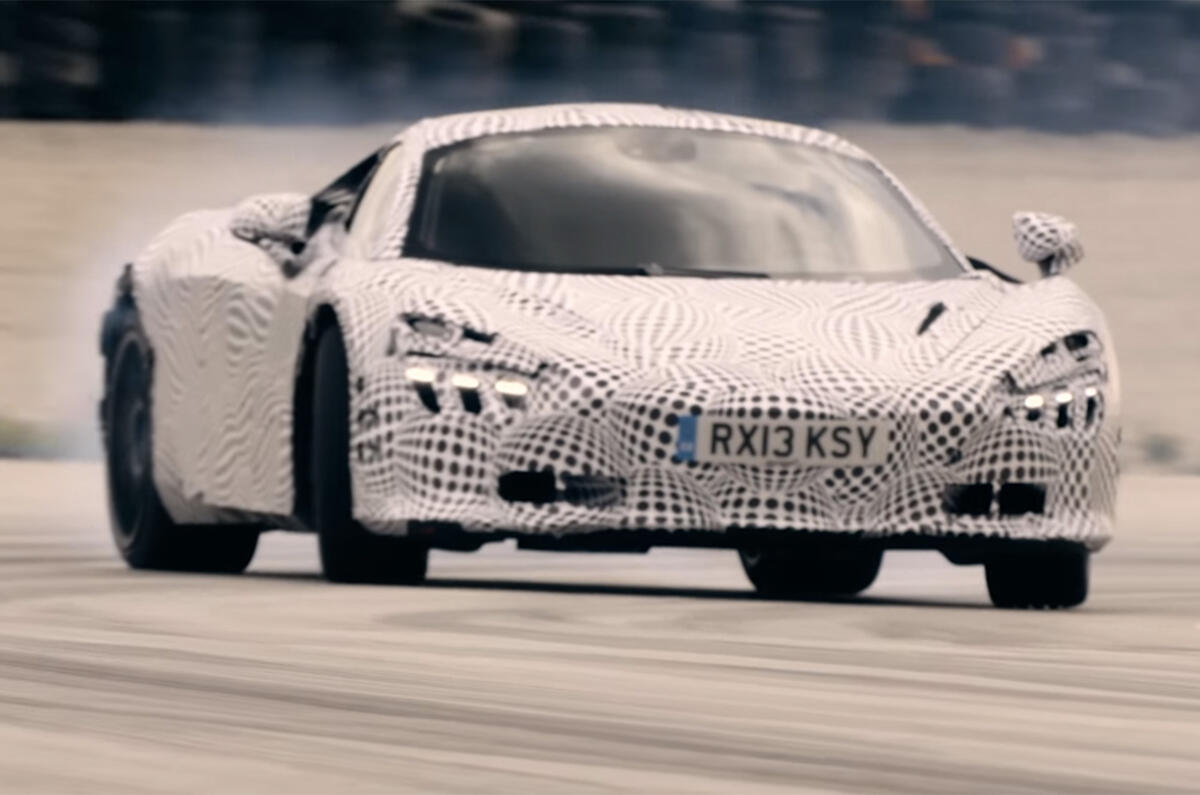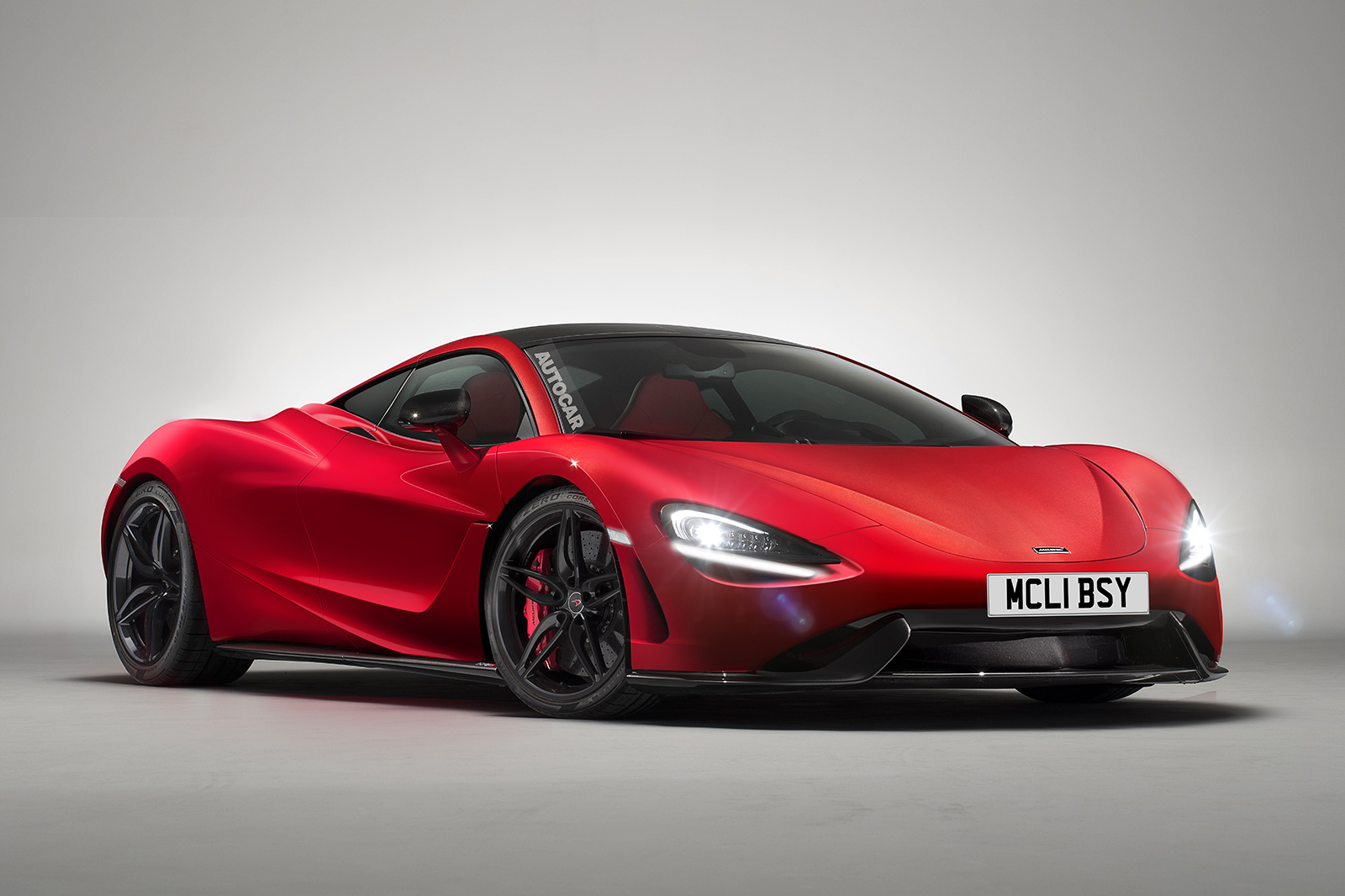McLaren has revealed a new driver display system for its 650S replacement, which will be revealed at the Geneva motor show next week.
212mph McLaren 720S revealed at Geneva motor show
The innovative folding display shows a range of information as an upright screen, with the format changing depending whether you are in Comfort, Sport or Track driving modes.
When the display slides down, it shows only essential information on a strip. McLaren says this is ideal for drivers wanting minimum distraction, whether that’s on a track or for simplicity.
A second 8.0in central infotainment screen provides control for functions including audio, media, navigation.
The McLaren 650S replacement will use a new 4.0-litre twin-turbocharged V8 and get upgraded brakes.
The model, codenamed P14, will achieve 0-124mph in 7.8sec and a standing quarter mile in 10.3secs, and will come to a standstill from 124mph in 4.6sec and 117 metres, according to the Woking-based firm.
That braking distance is six metres less than the 650S, and its replacement will get lighter, stiffer brake calipers and carbon-ceramic discs as standard. McLaren has also developed a bespoke Pirelli P-Zera Corsa tyre which, it says, provides a 6% improvement in mechanical grip compared to the 650S.
A video shows the car during dynamic testing driven by Chris Goodwin.
It will be powered by a new 4.0-litre engine, which is expected to exceed the 641bhp on the current 650S, and will be showcased by engine bay illumination when the vehicle is unlocked.
McLaren also claims the new exhaust system creates a clean, crisp exhaust note to “match the extreme performance of the engine, with the further option of a sports exhaust”.
McLaren Super Series boss Haydn Baker said: “Power, torque and throttle response are all significantly enhanced compared to the first-generation Super Series, yet with fuel efficiency and emissions also notably improved.”
The brand has previously confirmed the model will get a new generation of active chassis control system which will give it the “widest breadth of dynamic ability of any McLaren”.
Proactive Chassis Control II enables drivers to choose from Comfort, Sport or Track modes and, using sensors around the car including an accelerometer on each wheel hub, analyses inputs from the road to adjust the damping automatically.




























Join the debate
Add your comment
Looks an amazing piece of kit...
If they can use those sensors in the wheels...
china
correction